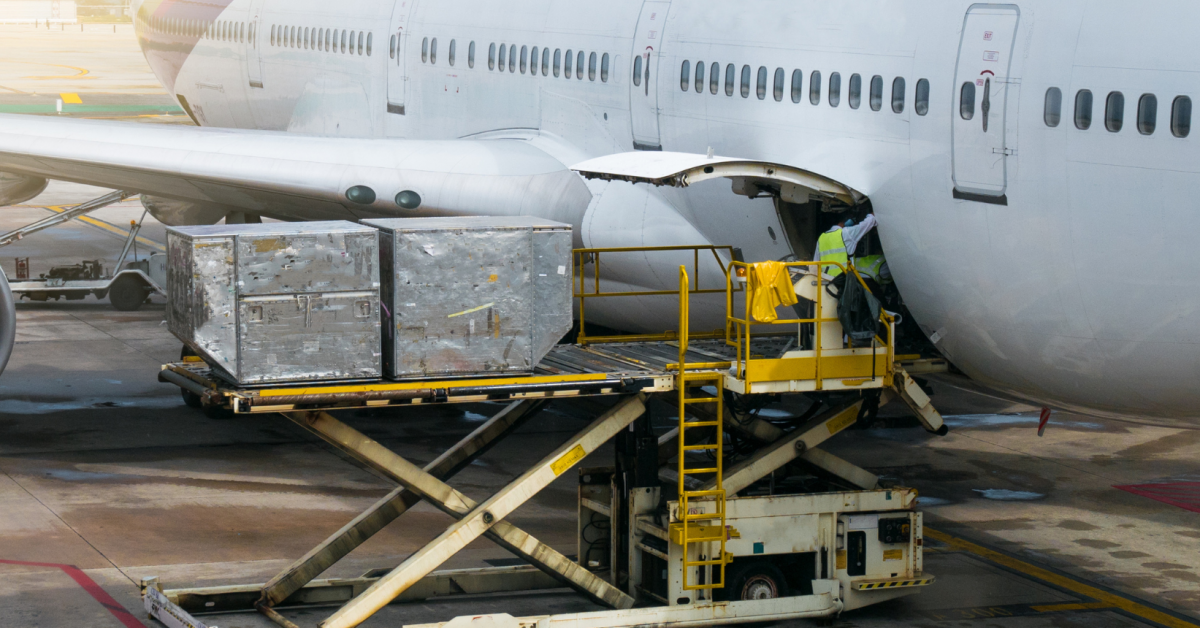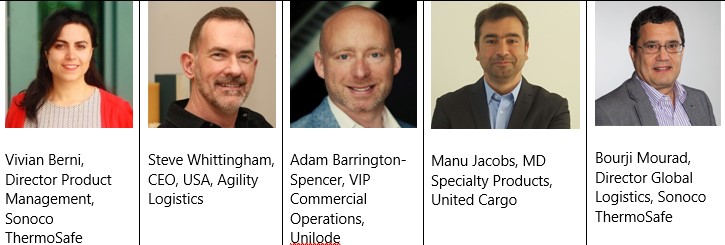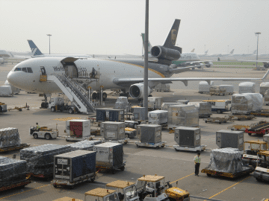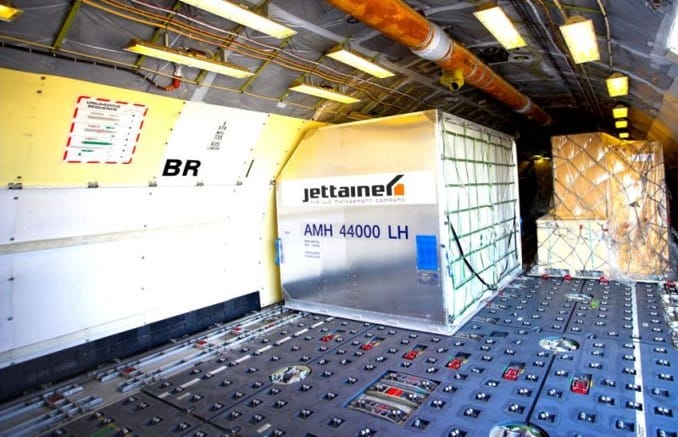AUGUST 15, 2021
Pharma Air Cargo: 6 Habits of Highly Effective Stakeholders

We had a live discussion with several air freight logistics stakeholders who each have a critical role in shipping temperature sensitive pharmaceutical air freight.
We challenged them with questions like:
- What operational processes are most important to on-time distribution?
- What are your customer key concerns to mitigate?
- Why is packaging at the heart of successful air freight from your perspective?
Here are the rockstar panelists:

6 Habits at a Glance
- Understand the limitations of the pharmaceutical product you’re moving, and the design specifications needed to protect that product.
- Know the technical capabilities and operational requirements of all packaging choices, to convey them to partners.
- Upfront collaboration and communication is essential, with all agreements clearly documented in SOPs, that are specific to market and trade lane.
- Knowledge of markets, destination airports, and shipping lane is imperative. If the knowledge is not within the pharma company, find a knowledgeable transportation partner.
- ULD partners need to take a proactive approach to plan for return logistics of containers, so demurrage and extra cost are reduced for customers.
- Ground Handling Agents (GHAs) need to be trained and re-trained. Air cargo manuals may differ between airlines.
Let’s dig in deeper
Why is packaging is at the heart of air freight logistics in your experience? What could go wrong?
Adam: Air freight logistics is really like a living human. On the outside it’s one mass, but on the inside made up of the brain, the lungs, the heart and all these critical components. Packaging is the same, it’s the first step of moving that product from A to B, that has several purposes whether it be protection, temperature, consistency, regulation, or even functional purpose.
Over the last few years, especially due to COVID, packaging is a focal point for the customer experience, especially in markets like retail.
The supply chain has matured greatly over the last sort of 10-15 years. A lot of what really used to go wrong doesn’t really go wrong today. I think it will be mentioned a lot today when we talk about collaboration we talk about the application of knowledge or training, and how product and the service development will be continue to be a key to that customer success.
Years ago, the push was to reduce weight to realize fuel savings. The airlines approached the container manufacturers to develop light weight containers, to sort of 30 to 35 kilos. Initially the weight reduction were huge cost savings on fuel. But then in late 2000’s, due to lack of collaboration, these really light weight designs were not designed for that infrastructure that we had. Then we started to see significant increase in costs to repair, maintain them, carry them.
Today, you really see that collaboration working, between the stakeholders across the industry to improve those designs, ongoing training and communication.
Steve: From a freight forwarder perspective, it’s quite simple. You must understand the pharmaceutical product you’re moving, and the design specifications you need to protect that product. In turn, that is going to drive or decide upon the appropriate kind of packaging that you utilize for it becomes the primary protection. It’s our job to ensure that the product arrives in good condition.
But then there’s always a discussion around cost, and there’s always a discussion around efficacy. The right packaging ensures that the specifications of the product being moved to maintain but in, addition it needs to also help with price sensitive decision that a company’s making. Pharmaceutical air freight is an expensive exercise. I think the right packaging, helps ensure that we are able to optimize the space that’s available to us in the aircraft.
Manu: From the airline’s point of view, it all starts with good communication, and basically coming to a good agreement between the different parties – including shipper to airline; forwarder to airline; shipper and ground handling agents, even with truckers – any third party.
That communication is basically agreeing on responsibilities taken by each party. It is crucial to draft SOPs clearly, understandable to each partner, that reflect reality. These could include a description of what to expect from a specific temp control shipment, and what not to expect – so there are no unpleasant surprises. Ideally, we should all work to the same standards and guidelines, it’s good we are moving in this direction.
It’s a bit difficult and cumbersome for the airline and ground handling agents to have recurrent training. There is a lot of staff turnover that requires ongoing training, and therefore a continuous improvement program is absolutely needed. How do we prevent same errors from happening again?
Bourji: I couldn’t agree with Manu more. Sometimes people may think a container or packaging solution can do magic. It works itself, ship it forget it, with no human involvement. Whether we like it or not, there’s always some human interaction that is needed – to press a button on a computer, download data, plug it in…
It’s important that the people involved in the handling need to be aware of the technology involved in that particular packaging solution. There are many systems, may do similar jobs, but they operate differently. Passive, active, ULD are handled differently.
Lastly, training, as mentioned by others. There are some stations around the world, or companies that may only see that particular type of container, a temperature controlled container, once in a blue moon. So they get the training, but then don’t see another container for another three weeks, three months, six months. Or personnel changes. Therefore regular training is really important, and having back up plans. It’s not necessarily about the value of the product, but about the intention of that product and where it needs to go, unspoiled. Right? The end user could be any one of us, expecting that healthcare product.

Could you talk to us about contingency planning in difficult times?
Steve: Earlier Adam had described how the supply chain sort of looks like a body, but when you look inside, there’s a multiple collaborations and people executing a function.
If you take a shipment from end to end – from point of pickup > the transportation into a handling facility > from a handling facility into aircraft > then through another transit point = contingency becomes critically important.
Could be somebody is waiting for that product at the end, flight delay or cancellations, and the list goes on. This is where the SOP cannot be understated – it must be used to outline exactly the technical requirements.
In the end, the technical functionality of the packaging being used should be understood and taken into consideration when build contingencies, partner relationships with appropriate carriers, the right tracking partners, is absolutely fundamental to being able to manage your supply chain that’s complex in its own right.
Then you throw in a year like 2020, turns everything on it’s head and makes it doubly triply complex leveraging relationships, strong partners, strong carrier partners, strong tracking partners, is fundamental to being able to manage that.
What are the areas of risk in operational processes that you see in handling bulk pharma shipments?
Bourji: At the end of the day, no one wants to lose a valuable pharmaceutical shipment to temperature excursion – not the airline, product owner, logistics provider and certainly not the end user. One of the hardest situations I’ve been in was when the product was lost. It was discovered that the product was booked with an airline, not for the cold chain service, but using general cargo on a very difficult lane. When you have a direct flight, for example, in most cases, it’s okay. But in this case, it wasn’t a direct flight and no provision was made for that.
Overall it was a difficult situation to be in because you provide solutions, you recommend partners, but if the clarity is not there from the beginning of building the right solution – it can all go wrong. Upfront discussions can be difficult, for example discussing of air freight charges – but critical discussions to have.
Where do you get the information to know you are choosing the right packaging, effective and efficient for your lane to make a successful delivery? Do you have enough information from the airline? (audience question)
Manu: The airline in most cases is not making the decisions on what packaging to use. We rely heavily on the shipper and the forwarder. Of course, the airline can provide feedback and suggestions, and certainly we can elaborate on our processes, such as where the weak points are, tarmac times… things like that. We hope our feedback helps the shipper and forwarder to make a good decision.
Steve: I think it’s very much understanding the technical requirements of the product. But also, people need to understand the technical functionality of the packaging. Whether it’s an active system, vs passive, or ULD vs. non-ULD.
If you are a company offering a cold chain solution for the pharma sector, you need to have people within your organization who are versed and up to speed.
Generally, our experience is that customers we work with have a very specific understanding of their product. They will typically be oriented to making a recommendation on the packaging that they would like to see the product move in. I think our job as the freight forwarder is to say “let’s tie that into what we know, in terms of airline capacity, the nature of the flights, the typical transit times in certain locations”. If you are transiting through the Middle East, that is potential a product going to be exposed to very high temperatures at certain times of the year.
There’s an absolute need to have that knowledge. I think from a freight forwarders perspective, we should be maybe part of a recommendation process. Generally, I find the customers come with they believe is appropriate packaging to sustain their product through the supply chain.
Bourji: A very interesting audience question. There are so many packaging solutions out there. Some would say you get what you pay for. Right? But doesn’t stop there, though. You can pay big money, but it could be the wrong solution for that particular product and for that particular lane. I think a lot of it is to do with building trade lane profiles, doing the risk analysis, qualify the lane, qualify the the product that they’re going to be using for the pharmaceutical product, for example.

Could you elaborate a on technical complexities and also aligning it with a pharma service grade level?
Manu: I’ll try to summarize because it’s more complex than it than it sounds. First, ground handling agents are all over the world if you have a global network. All processes and procedures are well documented in the air cargo manuals for agents. Of course, that same ground handling agent also works for another airline in that same location. Now they have to comply with two different cargo manuals. So it’s not easy. The manuals can differ, depending on the airline. Fortunately, we are seeing more and more similarities, thanks to more parties following guidelines like GDPs, CEIV or IATA Chapter 17.
I think the main responsibility for a GHA is to build, and manifest, and load the foreseen cargo in a safe and compliant way. Let’s not forget they work against time constraints and typical day to day issues. It’s enough, let’s say that two freighters are delayed and arrive only to depart at the same time but they . Then the goods need to be stored in controlled areas and temperature readings need to be taken. For active and hybrid containers, batteries need to be checked. Then sometimes there’s more complexity, dangerous goods, dry ice that potentially needs to be replenished. And so in when airlines in the end, need to reposition active or hybrid containers, it is about finding the right priority and visibility to return these containers because I think as we all know, repositioning of containers also remains complex and difficult, both from a commercial perspective but also from an operational perspective.
Containers that are ULDs can be tracked in the operational systems of the of the airline – so you get at least better tracking. Containers that are not ULDs, have to be built up on a PMC, and the PMC can be the only way to track the container. It’s a complex situation. We the airline rely on the ground handling agents – and the need for training, recurrent training, training, recurrent training.
Adam: Manu put it very well, the cool chain containers need a lot more care and attention.
The biggest issue that we find with our customers too, and probably the entire industry finds, is the reverse logistics. For ULD and non-ULD, there are a few key suppliers in the market. Typically they have locations around the world., lanes they like to protect. The challenge always comes down to the reverse logistics, being able to load that ULD back with baggage, cargo, or
It really does place a significant burden on the airline operations. Ultimately comes at a cost significant demurrage, extra days on lease and worse yet, you can end up losing the equipment altogether.
We have a team dedicated in Bangkok that manages just this – proactively making sure that when the ULD is about to arrive at the station, that the stations already know, our ground team already knows, so that we put all the wheels in motion so that these things don’t get lost, they don’t spend too much time on demurrage. We can find alternative ways to get it back for our customers.
What are the implications for ULD vs. non-ULD?
Bourji: I think the main differences are safety, functionality and cleanliness. Specifically, I’m thinking about Airline Certified ULDs. They have to go through a system where certain regulations need to be followed – including FAA and EASA insist on equipment to be serviced and maintained, repaired as per requirements. There are specialized people like Unilode, that have to be inspected and documented. Without that, there is a risk to flight, passengers. From that perspective ULDs are more controlled. From an operational perspective, GHAs, airlines and other partners have established procedures to load these ULDs quickly.
Learn more
To continue learning about differences in air freight containers, The Importance of Air Freight Container Choice to On-Time Distribution of Temperature Controlled Pharmaceuticals.
Watch now
To watch the live Experiences Exchange discussion and learn more about the 6 Habits of Highly-Effective Air Freight Stakeholders, watch the recorded webinar.

